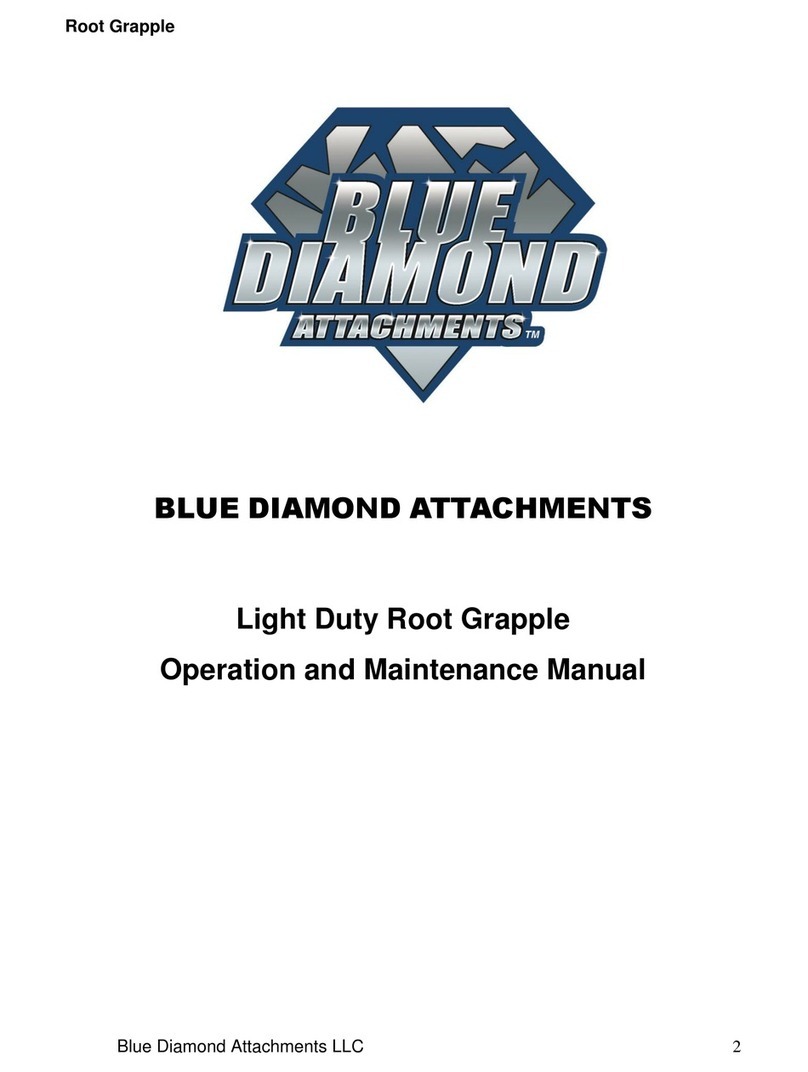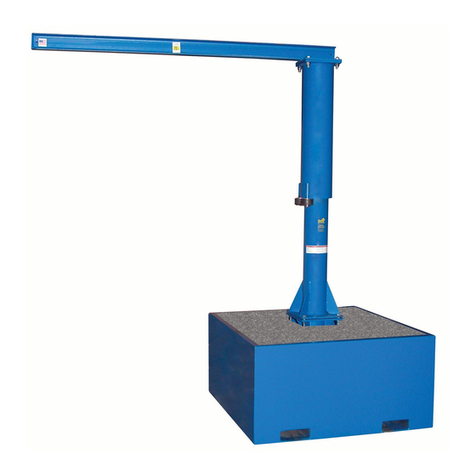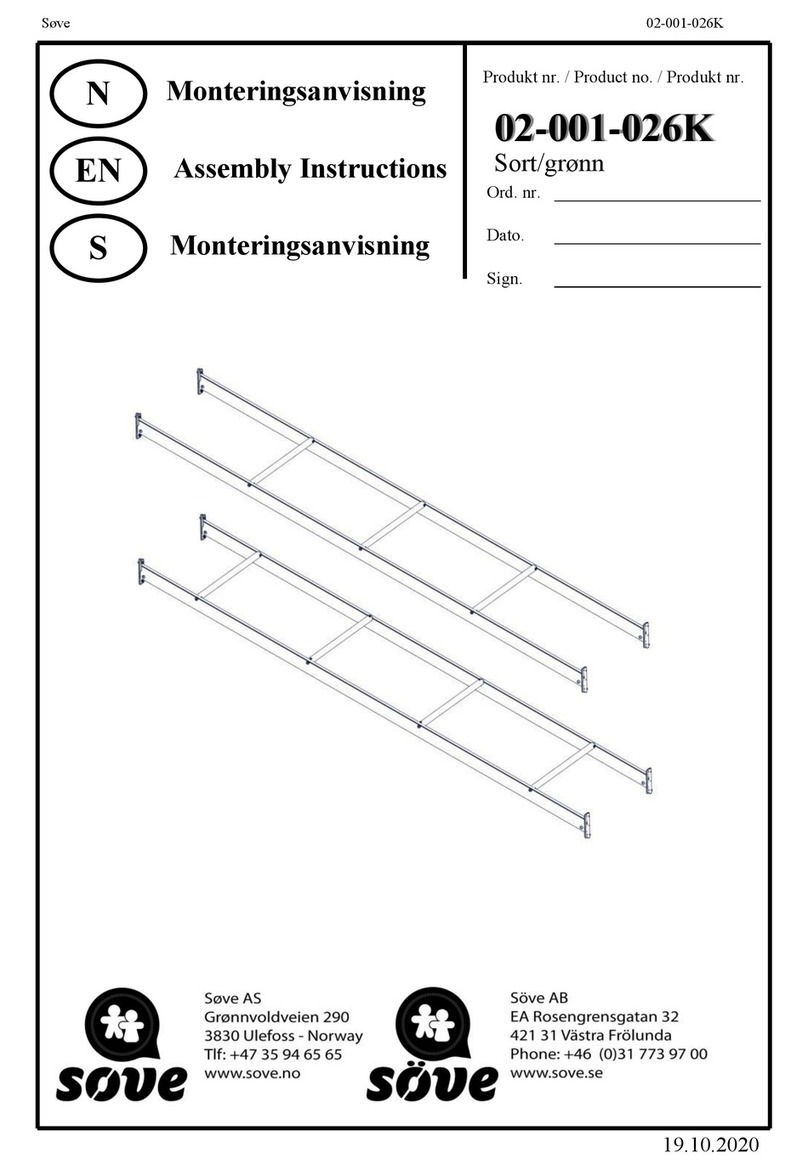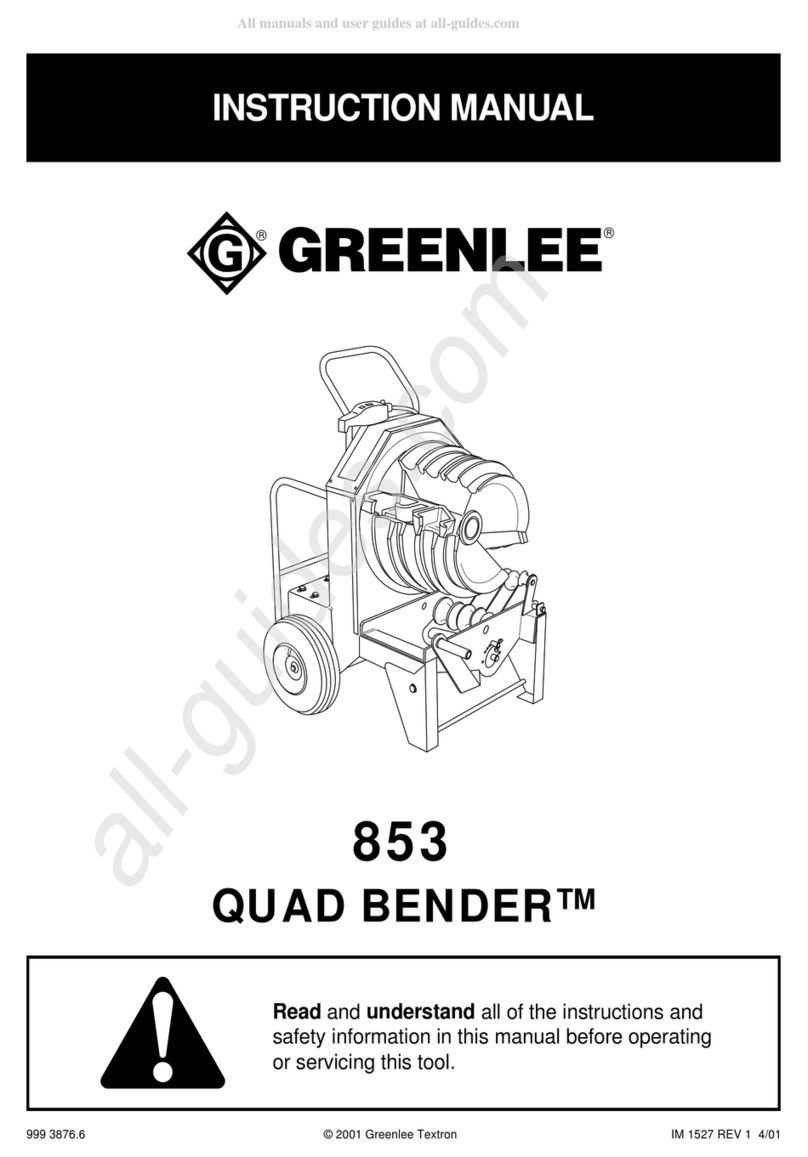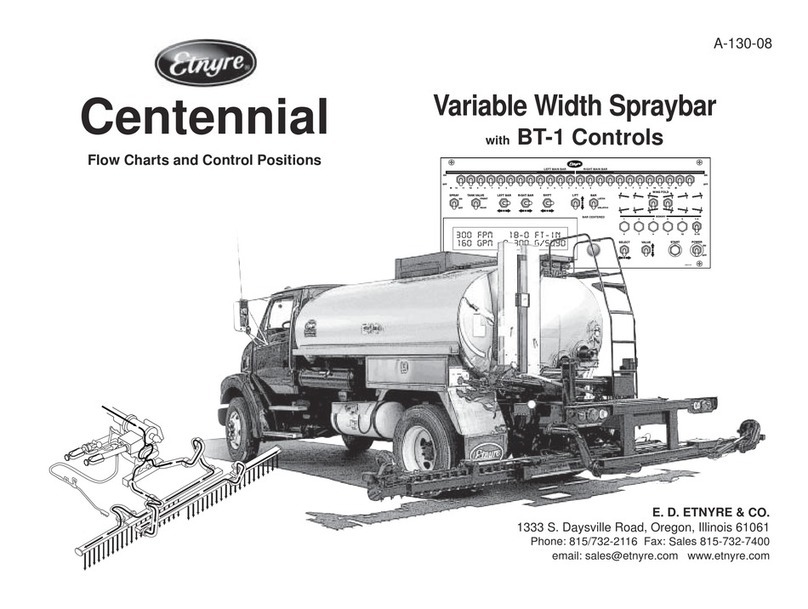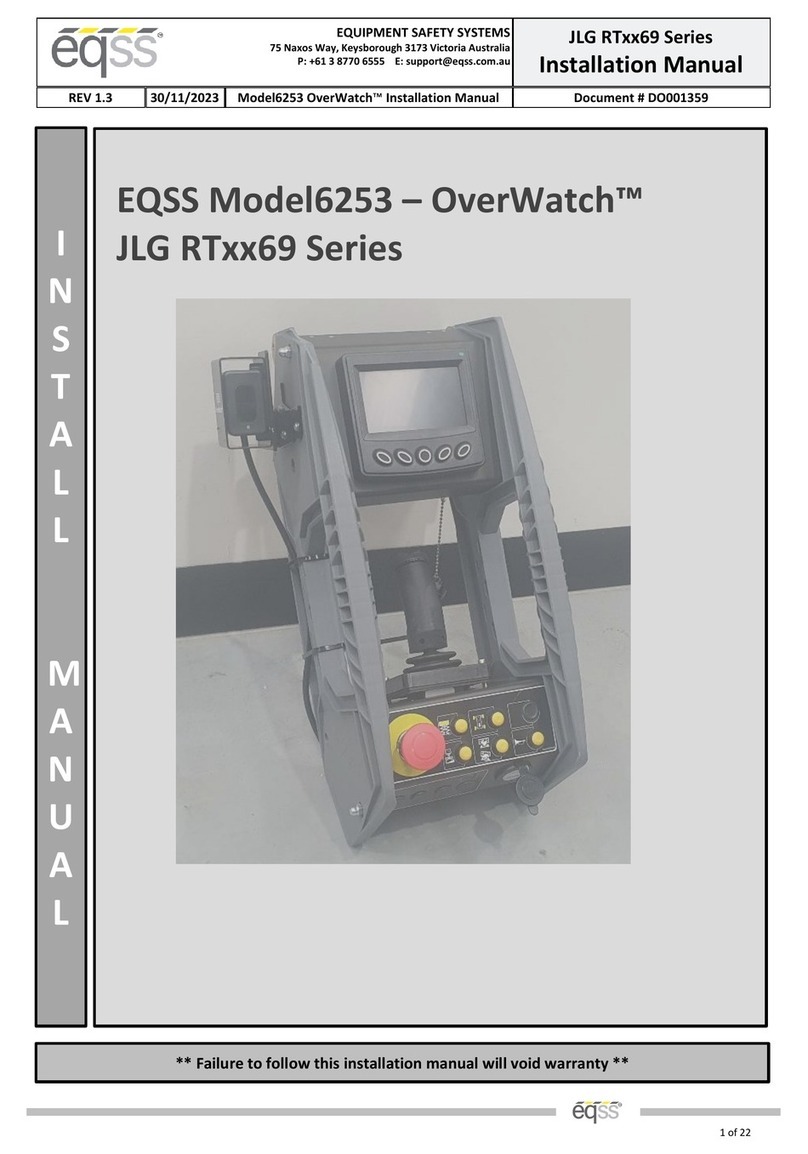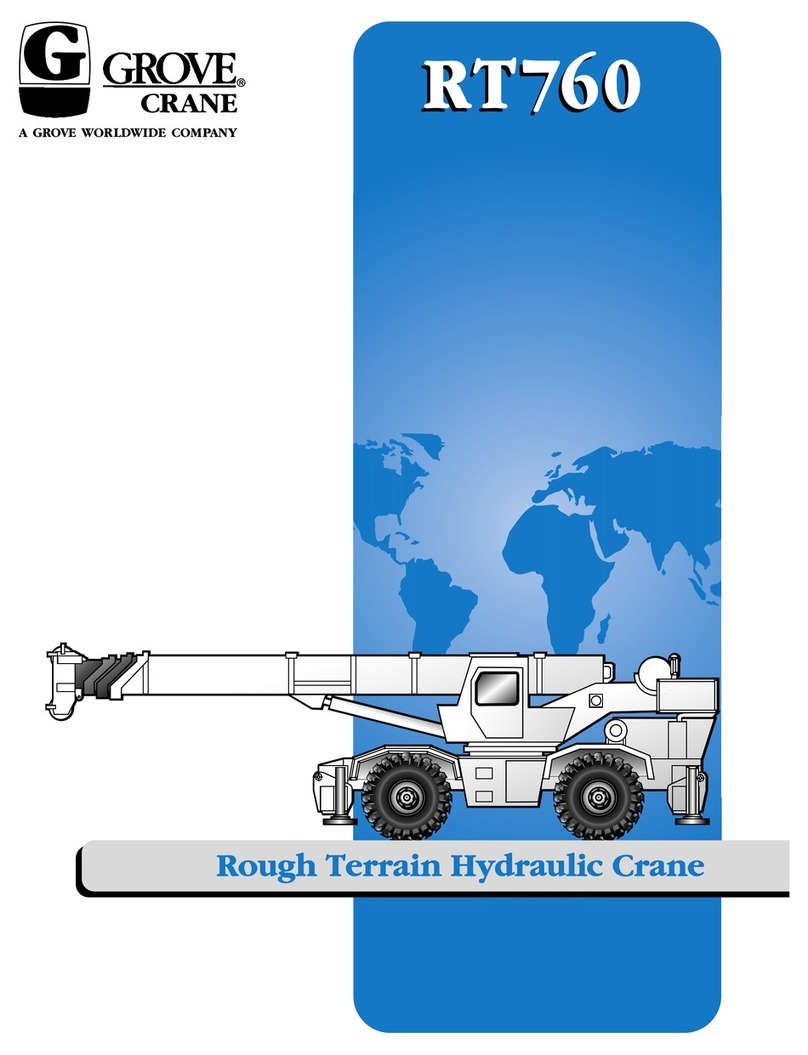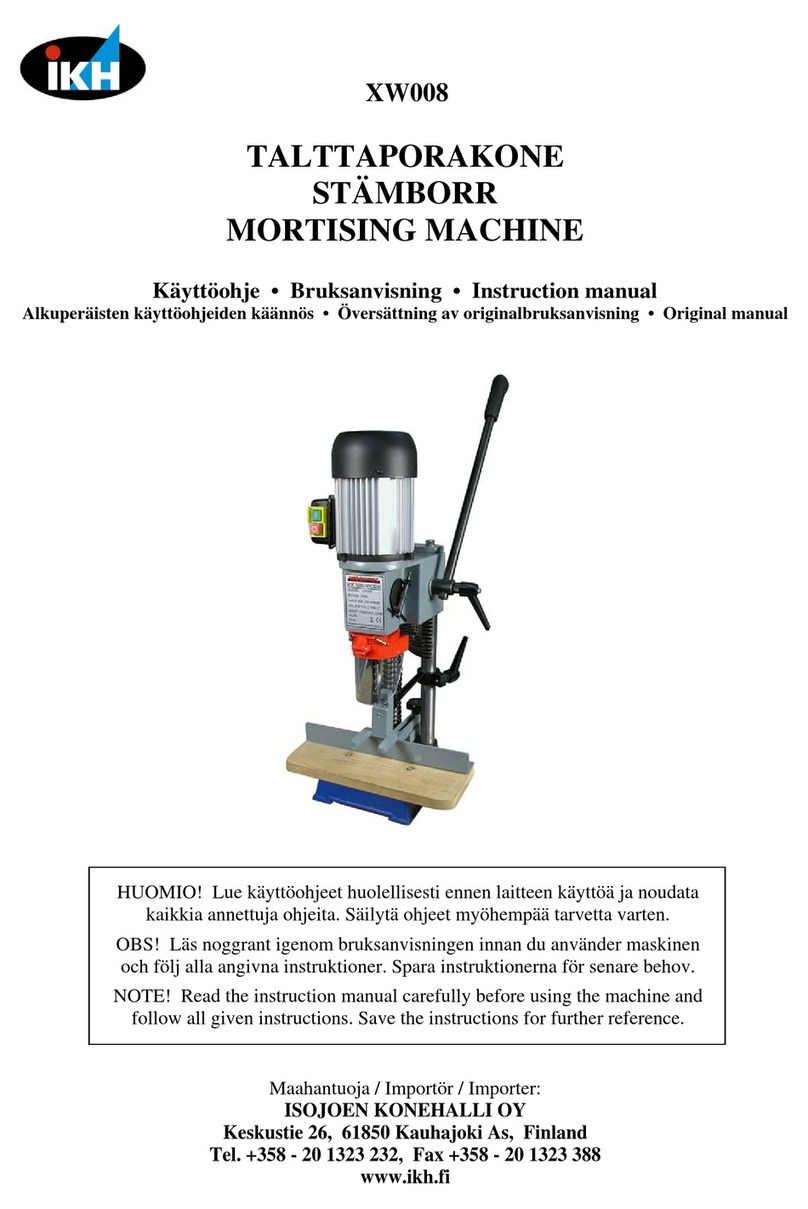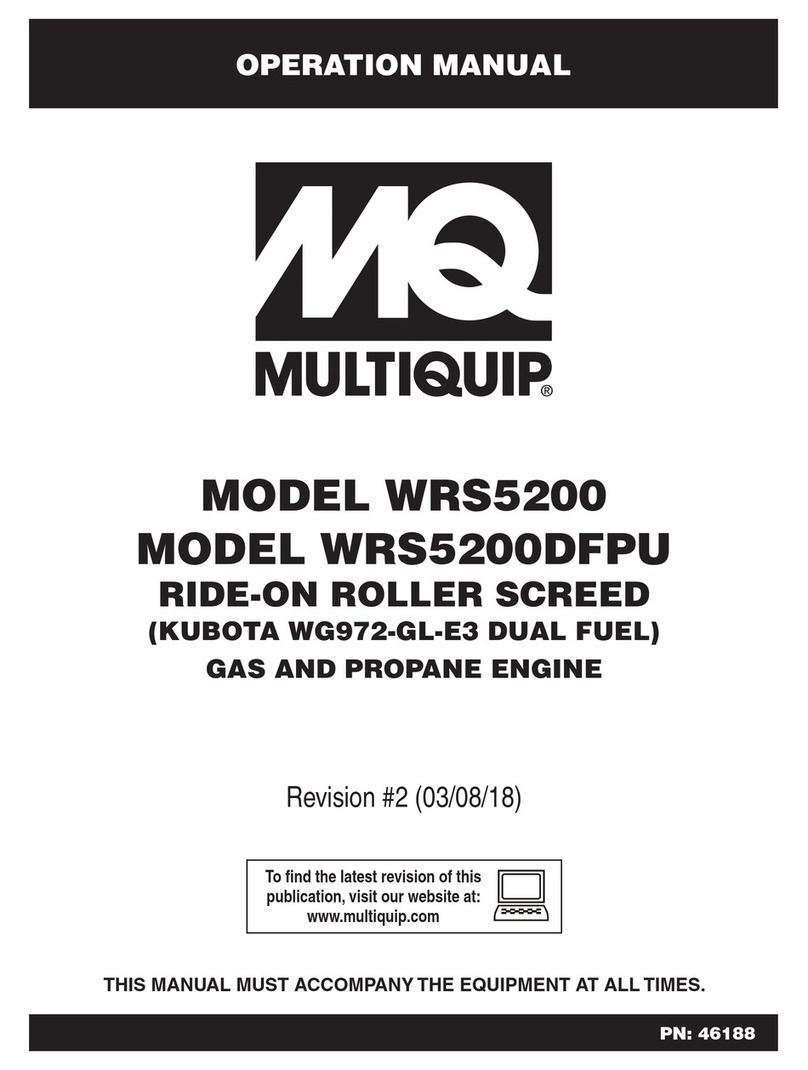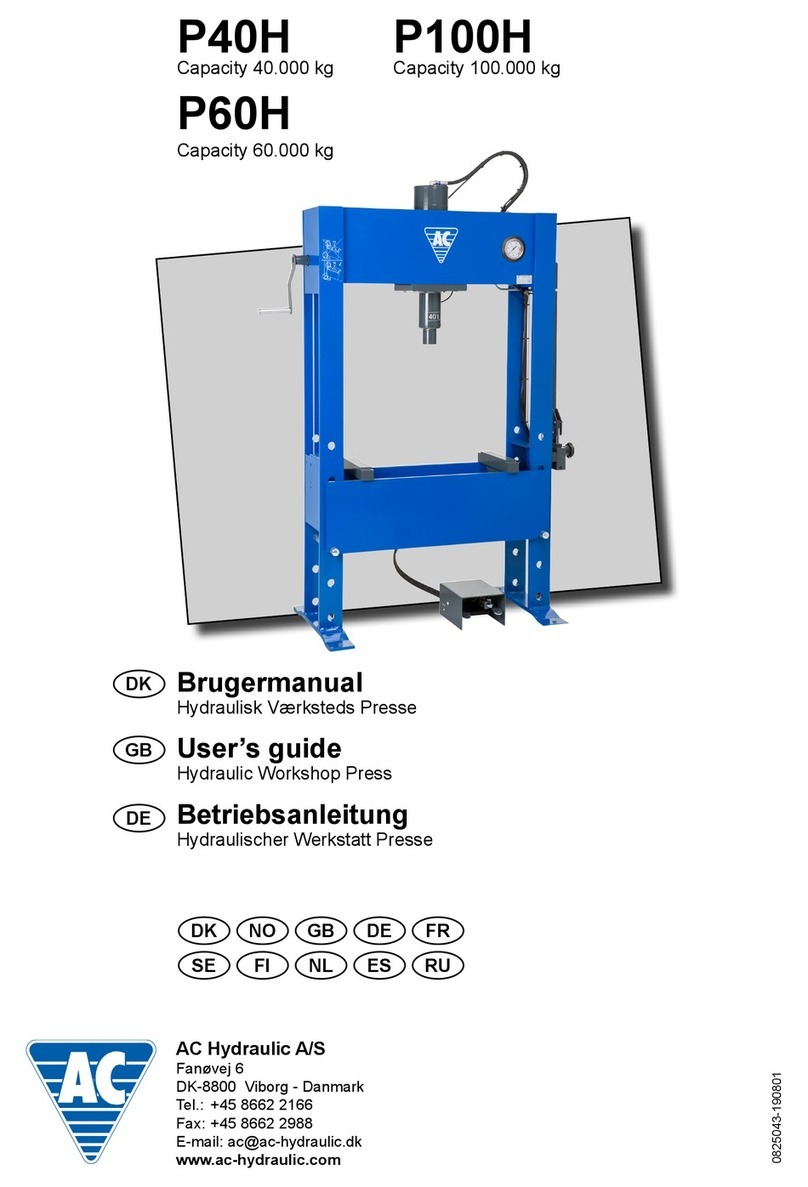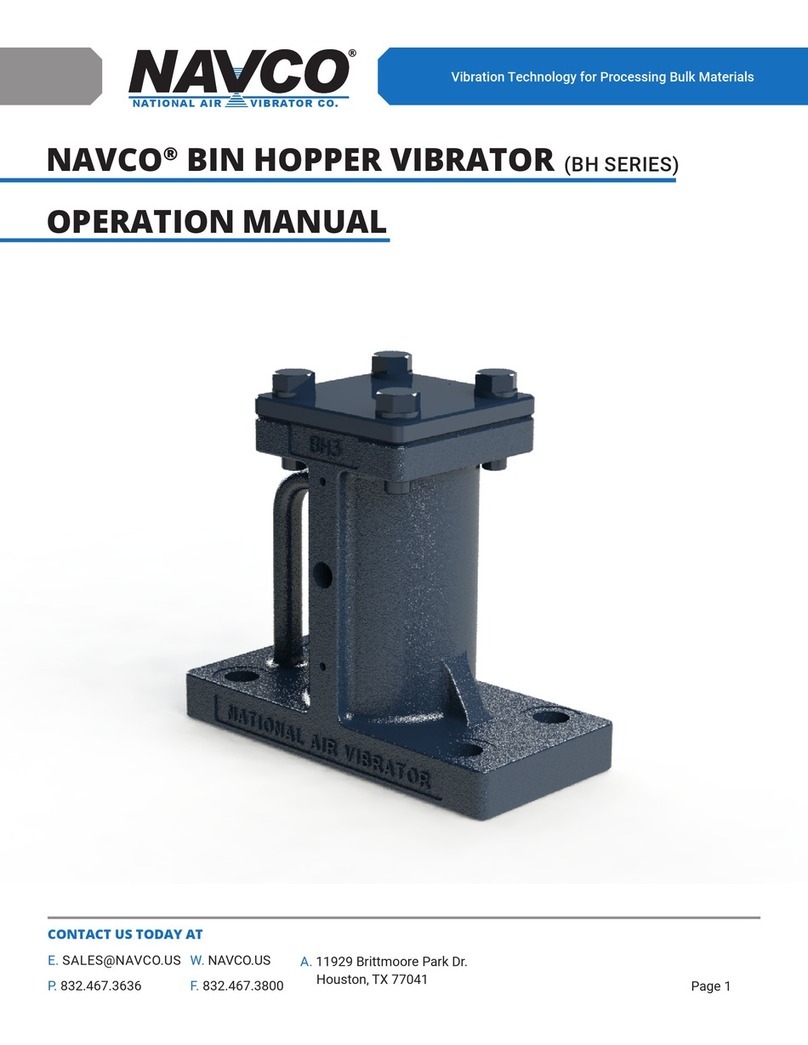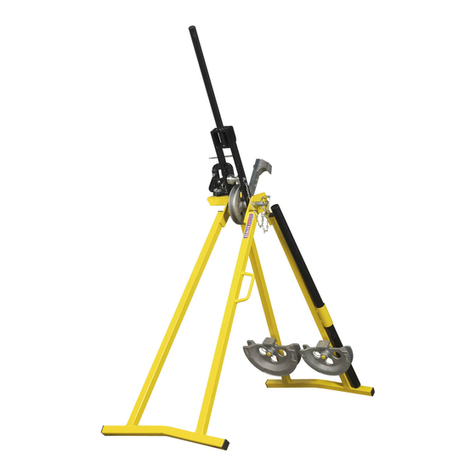Blue Diamond HB 50 User manual

Operation and Maintenance Manual
HB 50
888-376-7027 | BlueDiamondAttachments.com
Register your
WARRANTY
within 30 days
of purchase
135005

Blue Diamond® Attachments2
Thank you for your decision to purchase a Blue Dia-
mond® HB50 Breaker. To ensure maximum performance
of your equipment, it is mandatory that you thoroughly
study the Operator’s manual and follow the recommen-
dations. Proper operation and maintenance are essential
to maximize equipment life and prevent personal injury.
Operate and maintain this equipment in a safe man-
ner and in accordance with all applicable local, state,
and federal codes, regulations and /or laws. Follow all
on-product labeling and instructions.
Make sure that all personnel have read this Operator’s
Manual and thoroughly understand safe and correct
operating, installation and maintenance procedures.
Blue Diamond is continually working to improve its
products. Blue Diamond reserves the right to make any
improvements or changes as deemed practical and pos-
sible without incurring any responsibility or obligation
to make any changes or additions to equipment sold
previously.
Although great care has been taken to ensure the
accuracy of this publication, Blue Diamond makes no
warranty or guarantee of any kind, written or expressed,
implied or otherwise with regard to the information
contained within this manual. Blue Diamond assumes
no responsibility for any errors that may appear in this
manual and shall not be liable under any circumstances
for incidental, consequential or punitive damages in con-
nection with, or arising from the use of this manual.
Keep this manual available for frequent reference. All
new operators or owners must review the manual before
using the equipment and annually thereafter. Contact
your Blue Diamond Attachments Dealer for assistance,
information, or additional copies of the manual. Contact
www.bluediamondattachments.com or call 888-376-
7027 for a complete list of dealers in your area.
Serial Number Location:
Please record attachment information in the space pro-
vided for future reference.
Model Number:_____________________________
Serial Number: _____________________________
Dealer Name: ______________________________
Dealer Number:_____________________________
Date of Purchase:___________________________
The serial number plate is located on the front of the
attachment below the lifting hook.
Always use your serial number when requesting infor-
mation or when ordering parts.
NOTE: The directions left, right, front and rear, as
mentioned throughout this manual, are as viewed from
the operator’s position.
Introduction: Owner Information
Revision Date: 06.26.2023

3Blue Diamond® Attachments
Table of Contents
1. Introduction..................................................................................4-5
1.1 General Safety Information......................................................4
1.2 Operators .................................................................................. 5
2. Operation .................................................................................. 7-10
2.1 General Safety Information.....................................................7
2.2 Transporting the Attachment ................................................7
2.3 Hydraulic Connections .......................................................... 8
2.4 Attachment Installation on Excavators............................... 8
2.5 Breaker Operation.................................................................. 9
2.6 Breaker Operations to Avoid ..............................................10
3. Breaker Tool..............................................................................11-12
3.1 Tool Replacement.....................................................................11
3.2 Tool Types and Uses .............................................................12
4. Maintenance ............................................................................13-15
4.1 Cleaning ....................................................................................13
4.2 Maintenance and Inspection............................................... 13
4.3 Hydraulic System Check ......................................................13
4.4 Weekly Maintenance.............................................................14
4.5 Ending Operation and Storage........................................... 14
4.6 Troubleshooting .....................................................................15
5. Parts...........................................................................................16-17
5.1 Breaker Parts Breakdown .....................................................16
6. Specifications .........................................................................18-20
6.1 Attachment Specifications ....................................................18
6.2 Torque Specifications ..........................................................20
7. Warranty .........................................................................................21

Blue Diamond® Attachments4
1.1 General Safety Information Operating Safety
• Read and follow instructions in this manual
and the machine’s Operators Manual before
operating.
• The manual must always remain with the
machine. In case of loss or damage, request
a new copy from your dealer or from Blue
Diamond.
• Strictly follow all rules prescribed by the safety
pictograms/decals applied to the machine.
Ensure that all safety pictograms/decals are
legible. If pictograms/decals are worn, they
must be replaced with new ones obtained
from Blue Diamond and placed in the position
indicated by this manual.
• Before using the machine, make sure that
all safety devices are installed and in good
working conditions. In case of damaged or
missing shields, replace them immediately.
• It is absolutely forbidden to remove or alter
safety devices and/or safety precautions
• Pay maximum attention to avoid any accidental
contact with rotating parts of the machine.
• If the use of the machine is required at night
or in conditions of reduced visibility, use
the lighting system of the prime mover and
possibly an auxiliary lighting system.
1. Safety
CAUTION
The signal word CAUTION on the machine and
in the manuals indicates a potentially hazardous
situation which, if not avoided, may result in minor
or moderate injury. It may also be used to alert
against unsafe practices.
WARNING
The signal word WARNING on the machine and
in the manuals indicates a potentially hazardous
situation which, if not avoided, could result in
death or serious injury.
DANGER
The signal word DANGER on the machine and
in the manuals indicates a hazardous situation
which, if not avoided, will result in death or serious
injury.
SAFETY ALERT SYMBOL
This SAFETY ALERT SYMBOL identifies important
safety messages on the equipment and in the
owner’s manual. When you see this symbol, be
alert to the possibility of personal injury and
carefully read the message that follows.
IMPORTANT
The signal word IMPORTANT identifies
procedures which must be followed to avoid
damage to the machine.

5Blue Diamond® Attachments
1.2 Operators
Qualified Operators
The operator is a person suited to the work and
who is physically and psychologically able to
withstand the demands connected with operating
the equipment for its intended use. The operator
must not allow anyone to approach the machine
while it is working and must not allow external
personnel to operate the machine or attachment.
He is to follow the given instructions in this
manual and the machine operator’s manual in
order to obtain maximum performance, minimum
consumption, and maximum safety for himself and
for others.
The operator is responsible for scrupulously
observing all the instructions given in this manual.
Operator Training
• Check the rules and regulations at your
location. The rules may include an employer’s
work safety requirements. Regulations may
apply to local driving requirements or use
of a Slow Moving Vehicle (SMV) emblem.
Regulations may identify a hazard such as a
utility line.
• The new operator must start in an area without
bystanders and use all the controls until he or
she can operate the machine safely under all
conditions of the work area.
Operator Safety
• Before starting, and during operation of the
attachment, make sure there are no people
or animals in the operation area; the machine
can project material from the back with risks of
serious injury or death.
• During operation, adjustment, maintenance,
repairing, or transportation of the machine, the
operator must always use appropriate Personal
Protective Equipment (PPE) including but not
limited to safety glasses, working gloves, dust-
mask, safety helmet, and hearing protection.
• Do not operate the attachment or machine
while wearing loose fitting clothing that can be
entangled or caught in parts of the machine.
• Do not operate the implement when tired, not
in good condition, or under the influence of
alcohol or drugs.
1. Safety
AVOID SERIOUS INJURY OR DEATH
Operators must receive instructions before
operating the machine. Untrained operators can
cause serious injury or death.
For an operator to be qualified, he or she must
not use drugs or alcoholic drinks which impair
alertness or coordination while working. An
operator who is taking prescription drugs must
get medical advice to determine if he or she can
safely operate a machine and the equipment.
For an operator to be qualified, he or she must
have read and understood the instructions of
this manual, he or she must make adequate
preparation for the proper use of the machine,
and he or she must hold a driving license.
In case of doubt regarding the use of the machine
and/or the interpretation of this manual, the
operator must contact either their dealer or Blue
Diamond.
DANGER

Blue Diamond® Attachments6
1.2 Operators Cont’d
Operator Position and Zones
When the machine is running, the operator must
pay particular attention to his own position (Item
1) [Figure 1] to prevent being a source of danger to
himself or to bystanders. The area surrounding the
equipment is divided into the operation or danger
zone (Item 4) [Figure 1] and the safe zone (Item 5)
[Figure 1].
The Operation or Danger Zone is the one the
operator has to work in while the equipment
is working normally. The Operator’s Zone is
considered as a potentially dangerous area.
Individuals should not be present in the Operation
Zone (Item 3) [Figure 1] while the equipment is
running. It is extremely important that all accident
prevention standards indicated are strictly applied.
The Safe Zone is where bystanders should remain
while the equipment is running (Item 2) [Figure 1].
Figure 1
Personal Protective Equipment
The operator involved with the working of the
equipment or in the surroundings of the equipment
must always be equipped with adequate Personal
Protective Equipment (PPE). The required PPE
includes but is not limited to:
2. Safety
1
4
5
3
2
20 m
Proper Workclothes: To help ensure
your safety as a designated operator
wear proper workclothes.
Safety Helmet: To help ensure your
safety as a designated operator wear
a safety helmet.
Protective Shoes: To help ensure your
safety as a designated operator wear
protective shoes.
Hand Protection: To help ensure your
safety as a designated operator wear
protective gloves.
Eye and Ear Protection: To help
ensure your safety as a designated
operator wear eye and ear protection.

7Blue Diamond® Attachments
2.1 Entering and Exiting the
Prime Mover
Entering The Operator’s Position
Use the attachment safety treads, handles and
steps (on the machine) to enter the operator’s
position.
When in the operator’s position, lower safety seat
bar, start the engine and release the parking brake.
Leaving The Operator’s Position
Park the machine/attachment on a flat level
surface.
Place all controls in neutral, engage the park
brake, stop the engine and wait for all moving
parts to stop. Leave the operator’s position.
2.2 Transporting the
Attachment
Determine the total weight of the breaker including
the adapting plate and the mounted tool using
section 6.1 Attachment Specifications on page 18.
In order to move the breaker safely when not
attached to the excavator, it is necessary to use a
suitable and safe lifting system as seen in Figure 2.
Figure 2
Always use a means of transport and lifting that
can accommodate the weight of the breaker.
2. Operation
WARNING
AVOID SERIOUS INJURY OR DEATH
• Always park on a flat level surface.
• Lower lift arms and place attachment flat on
the ground.
• Place all controls in NEUTRAL.
• Engage the park brake.
• Stop the engine and remove the key.
• Wait for all moving parts to stop.
SEE MACHINE’S OPERATOR’S MANUAL FOR
ADDITIONAL INFORMATION.
IMPORTANT
See the machine’s Operator’s Manual for detailed
information on operating the loader.
CAUTION
The operator in charge of transportation and
installation of the attachment must be acquainted
with the following instructions.
Pay careful attention to the weight of the breaker.
WARNING
Always move with care. Each movement can be
very dangerous.
DO NOT pass or stop under the breaker when it is
lifted up.

Blue Diamond® Attachments8
WARNING
Stop the hydraulic system of the excavator!
2.3 Hydraulic Connections
Connect the pressure line hose to the entry side
labeled “IN” [Figure 3].
Connect the return line hose to the exit side
labeled “OUT” [Figure 3].
Figure 3
2.4 Attachment Installation
on Excavators
Connecting Attachment To The Machine
1. Place the breaker horizontally with its axis
parallel to the excavator boom on the ground
in a stable position.
2. Remove the pins holding the bucket and take
the bucket away, if present.
3. Insert the boom end in the middle of the
adapting plate.
• Line up the hole of the excavator boom
with the equivalent one on the adapting
plate. Insert the first pin.
• Line up the hole of the connecting rod with
the second pin and secure.
• Remove the end caps from the hoses.
Follow the instructions in Section 2.2
Hydraulic Connections on page 8.
• Store the caps of the hoses to be used
when the attachment is uninstalled.
Disconnecting Attachment From the
Machine
1. Place the breaker horizontally on the ground in
a safe area.
2. Close the hoses’ flow if possible.
3. Disconnect the hoses and close up the ends
of the flexible hoses in order to prevent oil
leaking and dirt intake.
4. Remove the connecting rod pin.
5. Remove the excavator boom pin.
6. After unblocking the hydraulic system, take the
excavator boom out of the adapting plate.
2. Operation
WARNING
AVOID SERIOUS INJURY OR DEATH
The locking pins must extend through the holes
in the attachment mounting frame. Failure to
secure locking pins can allow attachment to
come o.
SEE MACHINE’S OPERATOR’S MANUAL FOR
ADDITIONAL INFORMATION.
OUT IN
WARNING
Stop the hydraulic system of the excavator.

9Blue Diamond® Attachments
2.5 Breaker Operation
The tool contact area must be visible to the
operator to ensure full contact.
Engine Speed
During the breaker inspection, the installer
determines the exact ratio of excavator engine
revs to the appropriate oil flow rate for the breaker.
This information MUST be communicated to the
operator.
Usage Instructions
The breaker can work in all the positions allowed
by the joints of the excavator boom, as long as it is
always pressed perpendicular to the surface of the
material to be demolished.
The operator must maintain the correct pressure to
the breaker. If the pressure is too low, the breaker
retains a part of the energy which will be released
to the excavator boom. The boom will then
undergo dangerous vibration and shaking.
If the pressure is too powerful, the structure of the
breaker can be compromised as well as the metal
plate and the tool.
Excavator Boom Extension
While the breaker is in operation, shorten the
distance between the excavator and breaker as
much as possible. Extend the cylinder piston rods
only partially (Items 1 and 2) [Figure 4].
Figure 4
Avoid Blank Firing
Ensure that the tool does not slip from the surface
[Figure 5]. If the tool is placed incorrectly or is held
weakly to the material, dangerous blank firing can
occur.
Figure 5
2. Operation
WARNING
• The operator MUST follow all manufacturer’s
instructions.
• Do not use without the tool retaining pin.
• Use only tools authorized by the manufacturer.
WARNING
It is absolutely necessary that the operator
respects the ratio of revs to oil flow rate.
Working with a higher or lower number of revs can
cause serious damage to the a hammer.
WARNING
The correct position must be kept during the
whole phase of feed of the tool, operating on the
controls of the bucket and the excavator boom.
2
1
Yes
Yes
No
No

Blue Diamond® Attachments10
2.5 Breaker Operation Cont’d
Usage Instructions Cont’d
Operation Near/In Water or Wet Conditions
The breaker cannot operate in water if the water
level exceeds the tool stroke [Figure 6], unless the
breaker is set up for it.
If in doubt, contact Blue Diamond® Product Support.
Figure 6
2.6 Breaker Operations to
Avoid
Blank Firing
Avoid blank firing the breaker. Blank firing causes
early wear and chipping to the tool retainer pin
and the tool itself. Chips from the tool can cause
serious damage. Blank firing can cause the tool to
break prematurely.
Do not Use as a Lever
The tool cannot be used as a lever to move rocks
or other debris. This operation can cause the tool
to break or seize especially if this is done while the
breaker is working [Figure 7].
Figure 7
Removing Large Rocks
Do not remove or pull large rocks
or boulders using the breaker
frame. This can cause some parts
to become unwelded and the plate
can warp [Figure 8].
Figure 8
Stagnant Movement
Do not hammer in the same
location without moving for
more than 30 seconds. In the
event of a very hard surface,
it will be necessary to change
position very often until softer
ground is found [Figure 9].
Preheat Oil
Never forget to preheat the oil before beginning
operation, especially when there are low outdoor
temperatures. It is a good practice to operate the
translation control and those of the excavator
boom’s central piston to the end of the stroke
until the oil reaches a temperature of 77–86°F
(20–30°C).
2. Operation
YES
NO
NO
NO
NO
WARNING
If you stay in the same location too long, the drill
can swell up, the tool can seize, and the oil can
overheat.
Figure 9

11Blue Diamond® Attachments
3.1 Tool Replacement
Removing the Tool
Position the breaker vertically, touching the ground
[Figure 10]. Lift it up from the ground a few inches
so that the excavator boom supports the breaker’s
weight, but the tool is still making contact with the
ground.
Figure 10
Press the retainer pin with a screwdriver so that
the prominent part returns into its seat (Operation
1) [Figure 11].
With a second screwdriver, press on the retainer
pin for the tool and push it out almost completely
(Operation 2) [Figure 11].
Figure 11
Remove the retainer pin with gloved hands and
place the pin on the ground.
Enter the Operator’s position (see section 2.1
Entering and Exiting the Prime Mover on page 7)
and unblock the hydraulic system.
Lift the breaker vertically until the damaged tool
slips o.
Coupling a New Tool
Place the breaker horizontally on the ground with
the tool lined up in front of it.
Grease the part that must fit into the guide well.
Fit the tool end (the one with the retainer flat/flats)
into the guide manually. Two operators may be
necessary if the tool weight exceeds 65 lbs. Check
the weight in the technical specifications.
Then, push from the other side and fit the tool
completely into the guide [Figure 12]. Rotate the
tool so that its milled side sets parallel to the pin
guide. Insert the tool retainer pin.
Figure 12
3. Breaker Tool
WARNING
Always wear proper heat resistant work gloves
before replacing the tool because the tool gets
very hot during use.
OPERATION 2
OPERATION 1

Blue Diamond® Attachments12
3.2 Tool Types and Uses
Tools are dierent based on the dierent shapes
of their terminal parts. There are various types
of tools capable of meeting the requirements of
every kind of application.
Blunt Terminal Tool
The Blunt Terminal Tool (Item A) [Figure 13] is
suitable for stone crushing. These are normally
used on small and medium breakers.
Chisel Terminal Tool
The Chisel Terminal Tool (Item B) [Figure 13] is used
for mining in general. It is essential in demolitions
where a high cutting capacity is required such as
walls, floors, reinforced concrete buildings, fixed
section diggings, and stone excavations.
Not suitable for stone crushing. This tool covers
80% of the applications on small and large
breakers.
Pyramidal Terminal Tool
The Pyramidal Terminal Tool (Item C) [Figure 13] is
used similar to those of the Chisel Terminal Tool.
This tool is suitable for small breakers.
Cone-Shaped Terminal Tool
The Cone-Shaped Terminal Tool (Item D) [Figure
13] is suitable for the demolition of walls and non-
reinforced concrete structures, stones, and quite
soft materials. To be mounted on the whole range
of breakers.
Small Spade Terminal Tool & Asphalt-Cutter Tool
The Small Spade Terminal Tool (Item E) and
Asphalt-Cutter Tool (Item F) [Figure 13] is suitable
for tracing the lines marking the limits of the
diggings. To be mounted only on small and
medium breakers.
3. Breaker Tool
A B C D E F
Figure 13

13Blue Diamond® Attachments
It is always essential to remove the connecting
hoses between the breaker and the excavator.
4.1 Cleaning
The breaker does not require particular care. The
only necessary precaution consists in preventing
dirt from entering hose connections.
4.2 Maintenance and
Inspection
The breaker requires some important maintenance
in order to work correctly and not break
prematurely.
Greasing
Remember to only use a grease that meets the
following requirements:
• Resistant to high loads
• Water resistant, anti-rust, anti-corrosive
• NLGI-2 Penetration
• Dripping point of 200 – 220°C
• Temperature of use until t=170–180°C
We recommend only using authorized grease for a
longer lifespan of the parts.
Inspection
4.3 Hydraulic System Checks
Hydraulic Oil Temperature
Make sure that the temperature during work does
not exceed 80°C.
Higher temperature can cause an irregular working
condition and the breaker could stop.
Hydraulic Oil Levels
It is absolutely necessary to pay attention to the
hydraulic oil level in the excavator tank. If oil is
under the lowest limit, the breaker can vibrate or
work irregularly.
It is important to check the rigid and flexible hoses
in order to find damage, crushing, or oil leaks.
4. Maintenance
IMPORTANT
Throughly clean the quick couplers before
making connections. Dirt can quickly damage the
hydraulic system.
WARNING
Never operate on the breaker or on the hydraulic
system when they are under pressure or at high
temperatures.
IMPORTANT
The breaker must be greased at minimum every
2 hours of operation. A proper quantity of grease
must be used.
ITEMS
PMake sure that there are no oil leakages
along the tool shank.
PMake sure that no cracks are evident on
the frame or on the linking bracket.

Blue Diamond® Attachments14
4.4 Weekly Maintenance
Chipping or Cracks on the Tool or Pin
Take the tool out in order to determine possible
chipping or cracks in the bush and on the surface
of the tool pin.
Marks indicate insucient lubrication, use of
unsuitable oil, or improper use of the breaker.
With the help of a sanding disk, polish the
trimmings that can be seen on the surface
between the tool and the tool retainer pin (Items B)
[Figure 14].
Figure 14
Retainer Pin Wear
Check the wear of the tool retainer pin; in case of
excessive wear, invert the assembly or replace it.
Tool Bushings Wear
Check the wear on the tool bushings. If the inside
diameter is larger than the value indicated in the
technical specifications, contact Blue Diamond®
Product Support for assistance changing the
bushes.
Breaker Bolt Loosening
At regular intervals, check the possible loosening
of bolts; particularly:
• The screws fixing the head/bracket
• The screws fixing the flanges/hose joints
4.5 Ending Operation and
Storage
Ending the Day’s Operation
End the work day with a hot breaker. During the
night, the breaker should driven vertically into the
ground. When the breaker is left in this position,
the condensed water is easily emptied through the
prominent part of the piston avoiding oxidation.
Long Term Storage
When the breaker is disconnected from the
excavator boom and is left in storage for a long
time, it is necessary to do the following:
• Remove the tool, push the piston (with a tube)
as high as possible, grease abundantly, and re-
install the tool.
This operation prevents the piston terminal
from rusting.
• The breaker must be stored in an enclosed
place sheltered from weather.
4. Maintenance
B
5
6

15Blue Diamond® Attachments
4. Maintenance
PROBLEM CAUSE SOLUTION
Frequency loss with heavy and
violent blows.
Very high back pressures on the return
line.
Check for blockages in the return line. Remove obstacle.
Check if the filters are partially or totally blocked. Remove block-
age.
Check if the taps are partially or totally blocked. Remove obstacles.
Even though the breaker is
lifted up, the tool does not slide
downward.
Insucient greasing or dirt has entered
between the bushing guides and the tool.
Take down the tool, check the bush, and eliminate the seizing
marks. Clean, grease, and re-install the tool.
The breaker suddenly stops
after four or five blows just after
touching the ground surface.
The piston is at the bottom of the automat-
ic brake and the tool is completely out.
The material is usually soft. The tool sticks out but does not go in
again. The breaker must be reloaded correctly and the load must
be kept constant. Improve operation by keeping the breaker as
vertical as possible while working.
Oil leaking from the hoses’
connection block. The O-Ring is damaged. Take down the block and change the seals.
Oil leaking from the hoses.
The rubber hose is damaged. Reinstall and replace the flexible rubber hose.
The rubber hose is installed incorrectly and
not correctly tightened. Reinstall the hose correctly with proper tightness.
The breaker stops after a few
blows even after being rein-
stalled.
Dirt entered the breaker through the hose
connections.
Take down the breaker; clean and replace the damaged compo-
nents.
Oil leaking from the tool. Seals are work out and there are marks on
the piston surface. Replace seals and any other damaged parts.
The breaker beats with a weak
penetration force and there are
too many vibrations on the high
pressure rubber hose.
The accumulator has lost the pre-charge or
the diaphragm is broken.
Restore the correct pressure.
The diaphragm may need to be replaced before restoring the
correct nitrogen pressure.
The breaker increases the
number of blows but the power
decreases.
The tool support seat (support ring) is worn
out. The piston shortens the stroke.
Make sure the tool support seat (support ring) is intact. Proceed as
follows:
1. Lay the breaker on the ground and trace a mark on the tool at
the level of the bush end.
2. Remove the tool and make sure that the value between the
mark and the plate end of the tool is lower or equivalent to
the one indicated in the technical specifications. If it is higher,
replace the support ring immediately.
4.6 Troubleshooting

Blue Diamond® Attachments16
5. Parts
5.1 Breaker Parts Breakdown
6
29
10
28
9
1
8
27
34
26
4
24
33
21
22
20 5
4
23
7
16
7
15
32
30
17
18
31
19
14
13
11
12
2
25 3

17Blue Diamond® Attachments
5. Parts
ITEM PART NUMBER DESCRIPTION QTY
1 236504 O-Ring 1
2 235305 Bonded Washer 2
3 236535 Bonded Washer 2
4 235229 O-Ring 2
5 235275 Seal 1
6 235276 Screw 8
7 235277 Plug 5
8 235278 Screw 12
9 235205 Nitrogen Charging Valve 1
10 235267 Nut 8
11 235320 Plug 2
12 235254 Coupling 2
13 235255 Reduction 1
14 235279 Grease Nipple 1
15 235232 Elastic Pin 1
16 — Monoblock 1
17 235280 Support Bush 1
18 235000 Chisel Tool 1
19 235234 Tool Retainer 1
20 235281 Lower Body Bush 1
21 235233 Upper Body Bush 1
22 235282 Piston 1
23 235231 Body Bush Ring 1
24 235283 Distributor Bush 1
25 235228 Reduction 1
26 — Accumulator Base 1
27 — Accumulator Cover 1
28 235284 Upper Buer 1
29 235285 Adapting Plate 1
30 — Metal Case 1
31 235286 Front Shell 1
32 235287 Back Shell 1
33 235288 Distributor Valve 1
34 235289 Diaphragm 1

Blue Diamond® Attachments18
6.1 Attachment Specifications
DESCRIPTION 135005
Energy per Stroke 120 J
Maximum Frequency 1200 s/min
Maximum oil flow 17 – 25 L/min
Maximum working pressure 120 bar
Maximum exhaust back pressure 20 – 30 bar
Accumulator charging pressure 32 bar
Calibration pressure of the hydraulic system maximum valve 150 bar
Breaker weight in working conditions 60 kg
Tool weight 3 kg
Weight of the tool retainer 0.3 kg
Pressure line pipe diameter (EN 856 – 4SP) 1/2 G
Return line pipe diameter (EN 853 – 2SN) 1/2 G
Tool diameter 45 mm
Breaker height with tool without adapting plate 750 mm
Maximum length of the tool inner guide (L) 119 mm
Maximum diameter in front and back the tool bushings 48 mm
Maximum oil temperature in the tank 80°C
Maximum absorbed power 5 Kw
Excavator weight 0.7 – 1.2 t
6. Specifications
L

19Blue Diamond® Attachments
6.1 Attachment Specifications Cont’d
TIGHTENING VALUES
DESCRIPTION 135005
Accumulator screw 50 Nm
Accumulator cover 500 Nm
6. Specifications
OPTIMAL ENVIRONMENTAL WORKING CONDITIONS
DESCRIPTION 135005
Temperature Range for safe operation –5 – 45°C
Humidity Range for safe operation 40 – 90%
DESCRIPTION SIZE (mm)
A 900
B 553
C 197
D 216
E 228
DE
A
CB

Blue Diamond® Attachments20
6. Specifications
6.2 Torque Specifications
BOLT
TYPE CLASS 4.8 CLASS 8.8 OR 9.8 CLASS 10.9 CLASS 12.9
Size Lubricated Dry Lubricated Dry Lubricated Dry Lubricated Dry
M6 4.8 N•m 6 N•m 9 N•m 11 N•m 13 N•m 17 N•m 15 N•m 19 N•m
3.5 in / lb 4.5 in / lb 6.5 in / lb 8.5 in / lb 9.5 in / lb 12 in / lb 11.5 in / lb 14.5 in / lb
M8 12 N•m 15 N•m 22 N•m 28 N•m 32 N•m 40 N•m 37 N•m 47 N•m
8.5 in / lb 11 in / lb 16 in / lb 20 in / lb 24 in / lb 30 in / lb 28 in / lb 35 in / lb
M10 23 N•m 29 N•m 43 N•m 55 N•m 63 N•m 80 N•m 75 N•m 95 N•m
17 in / lb 21 in / lb 32 in / lb 40 in / lb 47 in / lb 60 in / lb 55 in / lb 70 in / lb
M12 40 N•m 50 N•m 75 N•m 95 N•m 110 N•m 140 N•m 130 N•m 165 N•m
29 in / lb 37 in / lb 55 in / lb 70 in / lb 80 in / lb 105 in / lb 95 in / lb 120 in / lb
M14 63 N•m 80 N•m 120 N•m 150 N•m 175 N•m 225 N•m 205 N•m 260 N•m
47 in / lb 60 in / lb 88 in / lb 110 in / lb 130 in / lb 165 in / lb 150 in / lb 190 in / lb
M16 135 N•m 175 N•m 260 N•m 330 N•m 375 N•m 475 N•m 440 N•m 560 N•m
100 in / lb 125 in / lb 195 in / lb 250 in / lb 275 in / lb 350 in / lb 325 in / lb 410 in / lb
M18 135 N•m 175 N•m 260 N•m 330 N•m 375 N•m 475 N•m 440 N•m 560 N•m
100 in / lb 125 in / lb 195 in / lb 250 in / lb 275 in / lb 350 in / lb 325 in / lb 410 in / lb
M20 190 N•m 240 N•m 375 N•m 475 N•m 530 N•m 675 N•m 625 N•m 800 N•m
140 in / lb 180 in / lb 275 in / lb 350 in / lb 400 in / lb 500 in / lb 460 in / lb 580 in / lb
M22 260 N•m 330 N•m 510 N•m 650 N•m 725 N•m 925 N•m 850 N•m 1075 N•m
190 in / lb 250 in / lb 375 in / lb 475 in / lb 540 in / lb 675 in / lb 625 in / lb 800 in / lb
M24 330 N•m 425 N•m 650 N•m 825 N•m 925 N•m 1150 N•m 1075 N•m 1350 N•m
250 in / lb 310 in / lb 475 in / lb 600 in / lb 675 in / lb 850 in / lb 800 in / lb 1000 in / lb
M27 490 N•m 625 N•m 950 N•m 1200 N•m 1350 N•m 1700 N•m 1600 N•m 2000 N•m
360 in / lb 450 in / lb 700 in / lb 875 in / lb 1000 in / lb 1250 in / lb 1150 in / lb 1500 in / lb
M30 675 N•m 850 N•m 1300 N•m 1650 N•m 1850 N•m 2300 N•m 2150 N•m 2700 N•m
490 in / lb 625 in / lb 950 in / lb 1200 in / lb 1350 in / lb 1700 in / lb 1600 in / lb 2000 in / lb
M33 900 N•m 1150 N•m 1750 N•m 2200 N•m 2500 N•m 3150 N•m 2900 N•m 3700 N•m
675 in / lb 850 in / lb 1300 in / lb 1650 in / lb 1850 in / lb 2350 in / lb 2150 in / lb 2750 in / lb
M36 1150 N•m 1450 N•m 2250 N•m 2850 N•m 3200 N•m 4050 N•m 3750 N•m 4750 N•m
850 in / lb 1075 in / lb 1650 in / lb 2100 in / lb 2350 in / lb 3000 in / lb 2750 in / lb 3500 in / lb
Standard Hardware and Lock Nuts
This manual suits for next models
1
Table of contents
Other Blue Diamond Construction Equipment manuals
Popular Construction Equipment manuals by other brands
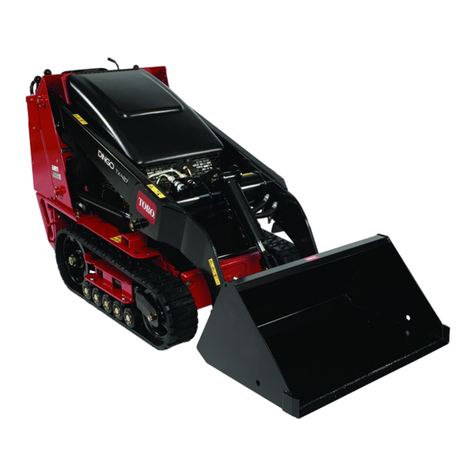
Toro
Toro TX 427 Operation and Safety Guide
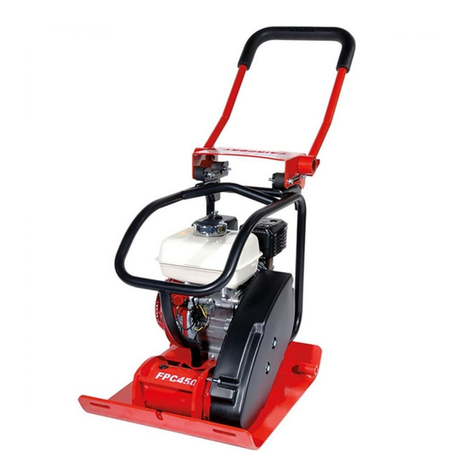
Fairport
Fairport FPC350 OPERATOR'S, SPARE PARTS & SERVICE MANUAL
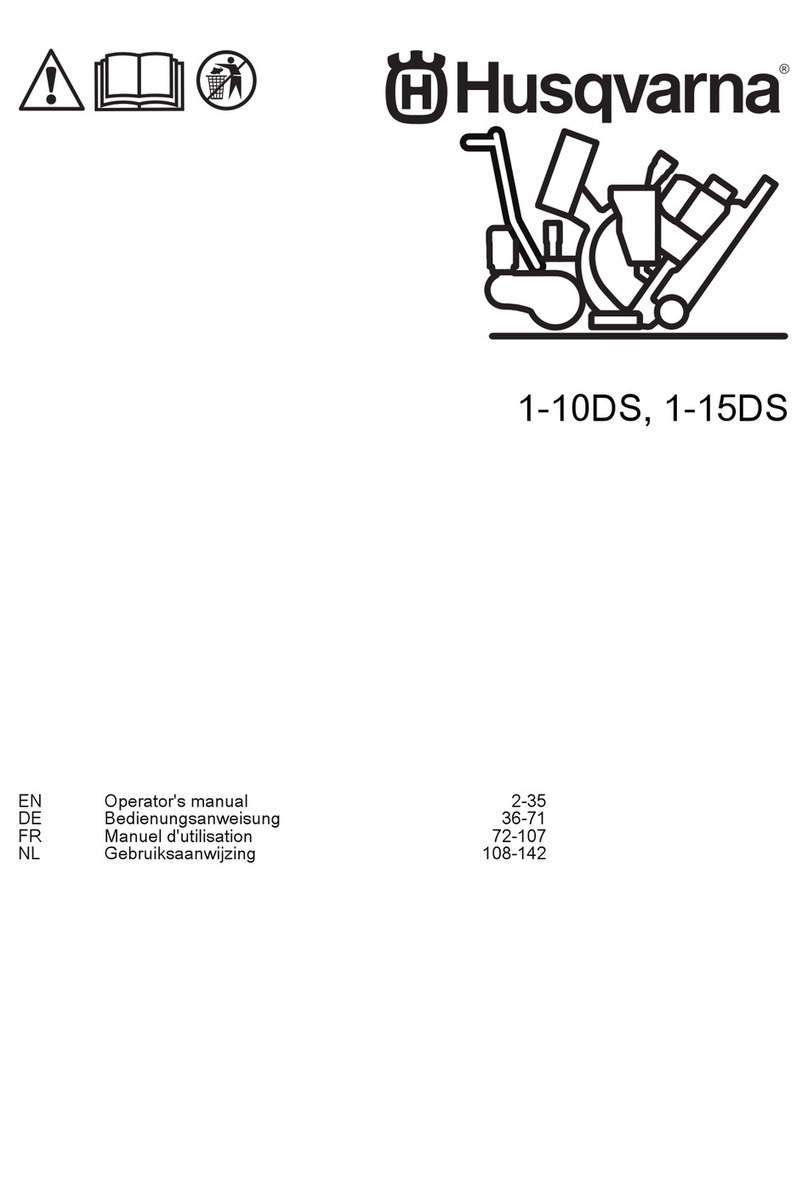
Husqvarna
Husqvarna 1-10DS Operator's manual

HADEF
HADEF 320/01 Installation, Operating and Maintenance Instructions for the Installer and the User
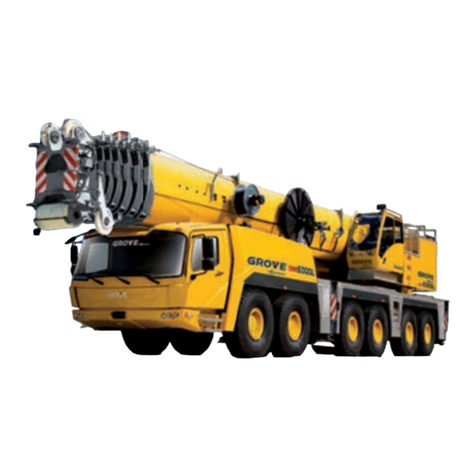
Manitowoc
Manitowoc Grove GMK6300L Product guide
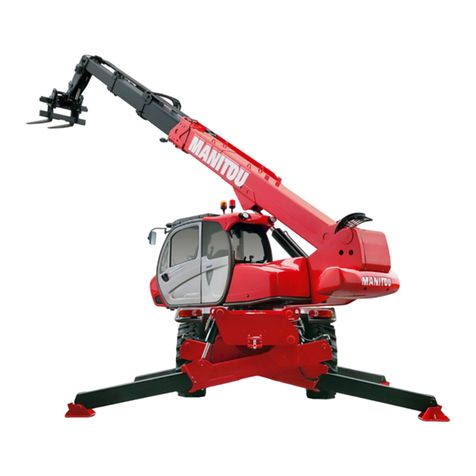
Manitou
Manitou MRT-X 2150 Privilege Plus ST3A S2 user manual

